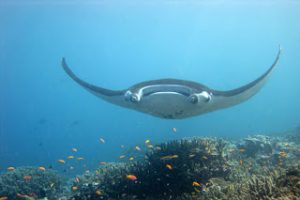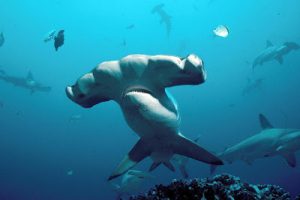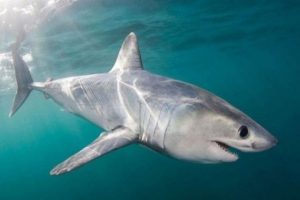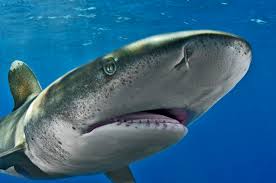Sea Save Foundation participated in the 16th meeting for the Convention on International Trade in Endangered Species (CITES ) in Bangkok, Thailand, in 2013 as part of a scientific, activist, and government effort to protect the world’s endangered species.
Attendees negotiated groundbreaking policy changes to protect seven marine species under Appendix II, including five shark species (scalloped hammerheads, great hammerheads, smooth hammerheads, oceanic whitetips, and porbeagles) and all manta rays.
The new rules, which took effect in September 2014, require participating nations to sustainably and legally harvest these species for international trade. It was the first time that commercially valuable and widely traded shark species have been included under these protections.
Organizations like Sea Save also perform a watchdog role, helping to ensure the process is fair and transparent. At CoP16, Sea Save learned that Chinese and Japanese representatives had planned a dinner to arrange payoffs and otherwise “encourage” other delegates to vote against shark protection. Sea Save reacted quickly and was able to record and disrupt their efforts to undermine the vote.

Manta rays are a family of rays sought mostly for their gill plates, which have become popular in Asian markets for their rumored (and unproven) health benefits. Manta rays live in small, fragmented populations and are slow to reproduce, making them highly vulnerable to overexploitation. In many countries, fisheries are not regulated, and unsustainable international trade threatens their survival. At COP16, all manta species were added to Appendix II
The hammerhead family of sharks, which includes several visually similar species, faces two threats: its popularity in the shark fin trade, and its vulnerability to unintentional capture (bycatch) by other fisheries. Rapid decline in hammerhead populations had led many countries to prohibit exploitation within their own borders. However, since the hammerhead is a migratory animal that favors coastal waters, protecting these species requires an international commitment to sustainable practices.


Both the meat and fins of the porbeagle shark are popular and valuable in international trade. Overfishing of the porbeagle has already led to dramatic declines in its population, especially in areas where fisheries are less regulated. This long-lived species is slow growing, late to mature, and produces only small numbers of young — all of which make it slow to recover from overfishing. As an apex predator, the porbeagle plays an important role in the overall health of the ecosystem.
With one of the largest ranges of any shark species, the oceanic whitetip was once among the most abundant sharks in the ocean. Similar to other species, it has experienced dramatic population declines in the last half century due to unintentional catch (bycatch) by tuna and other fisheries, and the popularity of its fins. While the fins of the oceanic whitetip are valuable, its meat is not, which means the carcass of this shark is frequently discarded after finning.

Sea Save Foundation is a 501 (c) 3 nonprofit organization EIN: 20-0403083. We received the GuideStar Platinum seal of approval in GuideStar’s Exchange program, meaning we have obtained their highest rating for transparency and legitimacy as an organization.



